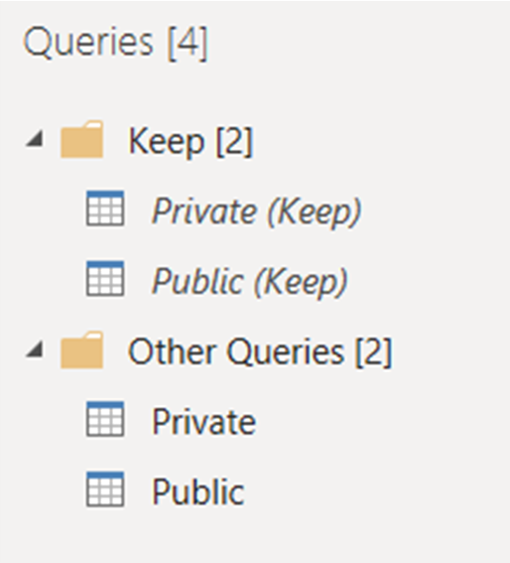Say Goodbye to Manual Updates – Transform Your Power BI Reports with Scheduled Refreshes
In today’s fast-paced business environment, it is crucial to have up-to-date data at your fingertips. As a Power BI user, you may have experienced the tedious and time-consuming task of manually refreshing your reports to ensure accurate and timely insights. But what if there was a way to say goodbye to manual updates and automate the process? Enter scheduled refreshes, a game-changing feature in Power BI that allows you to transform your reports and focus on what matters most—interpreting the data and making informed decisions.
Introduction
Introduce the topic of scheduled refreshes and its significance in Power BI. Highlight the challenges faced by users when manually updating reports.
The Importance of Scheduled Refreshes
Explain why scheduled refreshes are important in Power BI. Discuss the impact of real-time data, timely decision-making, and staying ahead of the competition.
Automating Power BI Reports
Describe the concept of automating Power BI reports and how it simplifies the process of data refreshing. Emphasize the benefits of saving time, reducing errors, and increasing productivity.
Benefits of Scheduled Refreshes
Highlight the advantages of using scheduled refreshes in Power BI. Discuss improved data accuracy, enhanced user experience, increased report reliability, and the ability to share live data insights.
How to Set Up Scheduled Refreshes in Power BI
Provide a step-by-step guide on configuring scheduled refreshes in Power BI.
Step 1: Configuring Data Source Credentials
Explain the importance of configuring data source credentials for scheduled refreshes. Walk through the process of setting up credentials for different data sources.
Step 2: Creating a Scheduled Refresh
Guide users through the steps of creating a scheduled refresh for their Power BI reports. Explain the options and settings available, including frequency and time zone selection.
Step 3: Managing Scheduled Refreshes
Discuss the management aspects of scheduled refreshes. Explain how to modify or delete existing refresh schedules, view refresh history, and troubleshoot common issues.
Best Practices for Scheduled Refreshes
Provide a list of best practices to optimize scheduled refreshes in Power BI. Include tips for efficient data source configuration, refreshing large datasets, handling incremental refreshes, and performance optimization.
Overcoming Challenges
Address the common challenges faced during scheduled refreshes and provide practical solutions. Discuss scenarios such as data source unavailability, network connectivity issues, and troubleshooting techniques.
Conclusion
Summarize the benefits of scheduled refreshes in Power BI. Encourage readers to leverage this powerful feature to automate their report updates and unlock the full potential of their data-driven decision-making process.
FAQs
FAQ 1: What happens if the data source is unavailable during a scheduled refresh?
If the data source is unavailable during a scheduled refresh, Power BI will attempt to connect and retrieve the data as per the defined schedule. If the data source is unavailable, Power BI will log the failure and provide notifications for further investigation. It’s recommended to monitor the status of scheduled refreshes and take appropriate actions to resolve any connectivity issues with the data source.
FAQ 2: Can I schedule refreshes for multiple datasets simultaneously?
Yes, Power BI allows you to schedule refreshes for multiple datasets concurrently. You can define separate refresh schedules for each dataset based on your requirements. This flexibility enables you to manage and update multiple reports with ease, ensuring all the insights are up-to-date across your organization.
FAQ 3: Can I schedule refreshes for Power BI Pro and Power BI Premium?
Scheduled refreshes are available for both Power BI Pro and Power BI Premium users. However, the frequency and performance capabilities may vary based on the licensing model. Power BI Premium offers enhanced scalability, performance, and more frequent refresh options compared to Power BI Pro.
FAQ 4: How often should I schedule refreshes for my Power BI reports?
The frequency of scheduled refreshes depends on the nature of your data and the business requirements. It’s recommended to evaluate the data refresh needs based on factors such as data volatility, data source availability, and the timeliness of insights required. For real-time data scenarios, you can set refresh intervals as low as every few minutes, while for less dynamic data, daily or weekly refreshes may be sufficient.
FAQ 5: Is it possible to monitor the status of scheduled refreshes?
Yes, Power BI provides monitoring capabilities to track the status and performance of scheduled refreshes. You can access the refresh history, view any errors or warnings encountered during the refresh process, and take proactive measures to ensure the reliability of your reports. Monitoring the refresh status allows you to identify and resolve any issues promptly, ensuring the data in your reports is always accurate and up-to-date.















